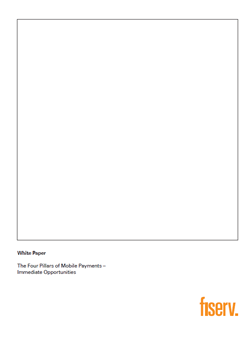
Mobile Payment Grundlagen
Finanzdienstleister können eine Führungsrolle beim mobilen Bezahlen übernehmen, indem sie auf bestehenden Vorteilen und Kundenbedarf aufbauen.
As the trade media focuses on the still-fragmented activity in mobile proximity payments and the mobile wallet at the point of sale, financial institutions are being distracted from the real and immediate opportunities within mobile payments.
For financial institutions tasked with defining mobile payments strategies, it is best to start by considering the recipients of the payments. Therefore, the building blocks of mobile payments can be thought of in terms of Four Pillars:
- Paying Self – using a mobile device to make transfers and to deposit checks into a personal bank account, via mobile deposit and funds transfer capabilities
- Paying Other People – making person-to-person (P2P) payments (domestic or international) to individuals and groups of individuals from a mobile device
- Paying Billers – making payments to a biller either through a financial institution mobile app or a biller mobile app; functionality may include eBill presentment and payment capabilities such as using the mobile device camera to capture an image of a bill to automate payee set up
- Paying Merchants/Retailers – making purchases either in a store via mobile proximity payments (near field communication (NFC), quick response (QR) code, cloud) or online via apps and mobile websites
Quelle: Fiserv
Das Whitepaper „The Four Pillars of Mobile Payments – Immediate Opportunities“ können Sie hier direkt herunterladen.


